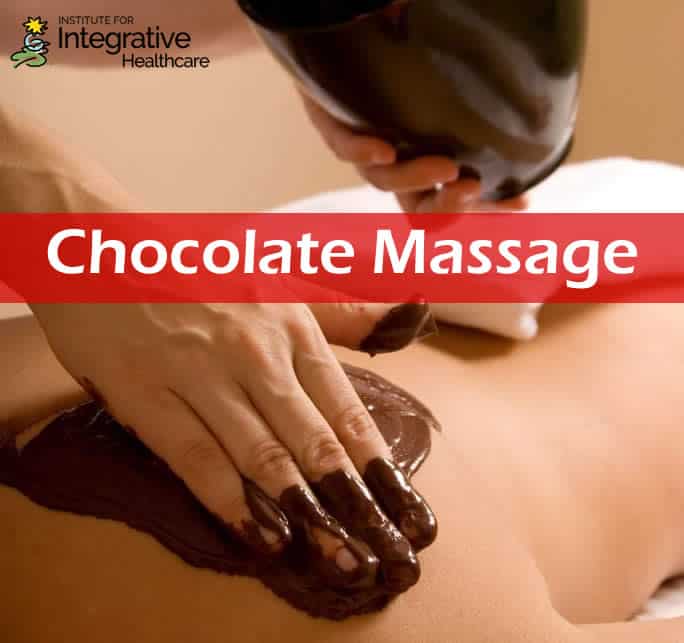

A unique massage designed for a particular holiday can provide a boost to any massage therapy practice; especially a chocolate-themed treatment for Valentine’s Day. Health conscious people frequently look to wellness sessions for gift giving, and massage therapy ranks among the most treasured modality. Presents for the holiday of love tend to default towards chocolate, but many would be delighted to go above and beyond the norm by combining two heavenly experiences – chocolate and massage.
At first thought, a chocolate massage seems counterintuitive. Concerns about chocolate encouraging acne and being sticky and messy might dissuade a therapist or client from further investigation. However, cocoa butter is an ideal massage medium that possesses several therapeutic and psychological benefits.
Cocoa Butter
Although not out of the question, the increasingly popular chocolate massage does not involve working a sticky, chocolate syrup into the skin. This is because there is no sugar or milk used in the massage medium. Instead, a chocolate massage might be better termed massage with cacao or cocoa butter.
Cocoa powder and cocoa butter are two of the major products made from the cacoa bean. Although extracted and processed separately, cocoa butter and powder reunite to manufacture chocolate. A common ingredient in creams and moisturizers, cocoa butter:
- appears to be off-white or light beige
- is responsible for chocolate’s bulk and consistency
- is composed of a combination of fats that is solid at room temperature, but liquid at human body temperature
- is the reason that chocolate literally melts in your mouth
- is resistant to oxidation, which helps chocolate from becoming rancid
Benefits to Using Cocoa Butter During Massage Therapy
Promoting a chocolate massage will necessitate some education so that clients know what is so special about this type of treatment. Three reasons to consider massage therapy with cocoa butter are:
- Skin Elasticity – Cocoa butter contains high levels of antioxidants which help fight off free radicals, reducing signs of stress and aging. Antioxidants give the skin a plumper, firmer feel and help skin cells build collagen and elastin. They prevent damage by free radicals which are responsible for loss of skin elasticity.
- Moisturizing – Cocoa butter is extremely moisturizing and valuable for dry skin, eczema and rough patches. Because wintertime is frequently associated with dry skin, mid-February is the ideal time of year to fortify the skin’s moisture levels. In addition, the antioxidants in cocoa butter also help the skin retain moisture long after the massage is over.
- Endorphin Boost – Endorphins are the body’s natural hormones that ease pain and make us feel good. While massage therapy aids in endorphin release by itself, the effect can be amplified by tapping into favorable smells. Dr. Alan Hirsch, neurological director of the Smell and Taste Treatment and Research Foundation of Chicago, reported that the smell of chocolate positively affects the brain by causing feelings of euphoria.
To increase the cream’s liquidity, it can be mixed with almond oil.
Adding Cocoa Powder
Cocoa butter in and of itself is a great smelling, moisturizing and cell-protecting substance for a massage, but it can be even more potent by mixing a little cocoa powder into your cream. Besides giving the product an even richer aroma and darker color, cocoa powder also contains caffeine. When applied topically, caffeine functions to stimulate blood circulation. Improving blood flow is advantageous because it can help relax muscles and invigorate the turnover of new skin cells.
Offered in several high-end spas around the globe, chocolate massage is gaining popularity. For the health conscious who wish to demonstrate love to themselves or others on Valentine’s Day, massage therapy with a cocoa formulation is a great reward, without any of chocolate’s calories.












5 Responses to Chocolate Massage – The Perfect Valentine’s Gift